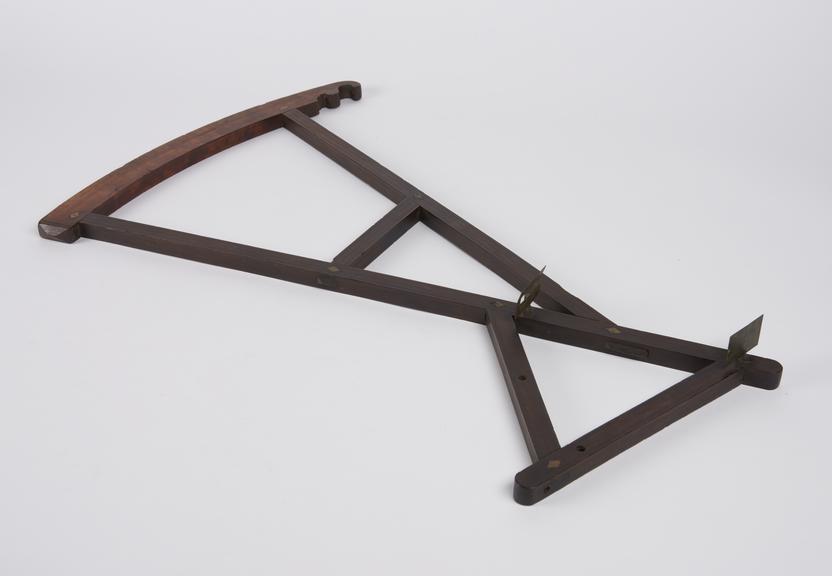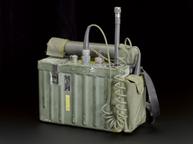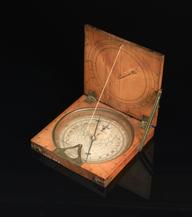


Wooden backstaff or Davis quadrant designed to carry an artificial horizon (lacking) invented by John Elton (Patent No.501, 1728) and made by Jonathan Sisson, London, around 1732. The navigational instrument is fitted with single boxwood circular scale (30°arc -2–25 & 10’ divisions) on a lignum vitae frame with brass sighting and horizon vanes. It is stamped with the maker’s name on the scale handle and ‘A K’, a possibly owner. The lacking horizon consists of two bubble levels that are used to keep the index arm level while the frame of the instrument rotates. A third bubble level mounted on the label arm was used for the forward observation.
Details
- Category:
- Navigation
- Object Number:
- 1923-473
- type:
- back-staff and artificial horizon
- credit:
- Cooke, Troughton & Simms Ltd.




